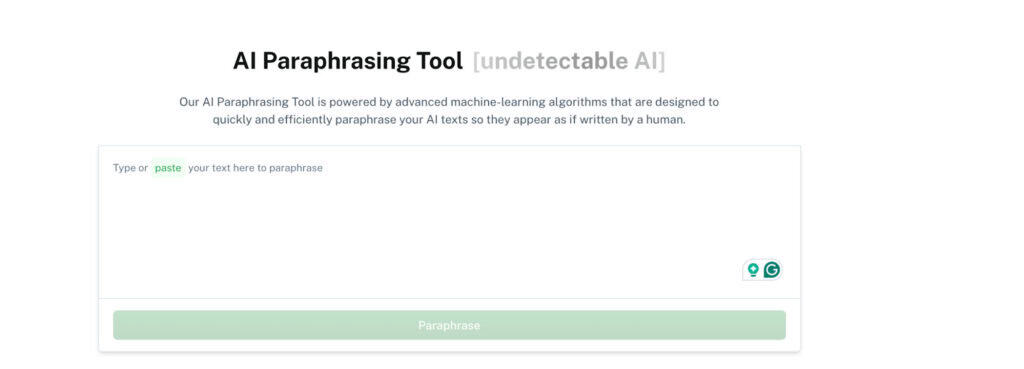Ever find yourself drowning in a sea of words, struggling to get your point across? You’re not alone.
Many writers, from business folks to budding novelists, grapple with sentences that seem to go on forever. But here’s the thing: shorter sentences pack a punch.
Our brains crave simplicity. We want ideas served up in bite-sized chunks, not never-ending word salad.
Now, you might be wondering, “What’s the magic number?” Well, here’s a shocker: aim for an average of 14 to 18 words per sentence.
Yep, you read that right. It’s way shorter than what most of us are used to writing.
But don’t panic! We’re not asking you to write like a first-grader. The key is variety.
Mix in some longer sentences (20 or even 30 words) and super-short ones (even just one or two words). It’s all about balance.
In this guide, we’ll walk you through 10 easy and effective steps to trim the fat from your sentences. And remember, the AI impact on job writing practices is significant, so stick around.
We’ve got a secret tool that’ll make this whole process a breeze. Ready to revolutionize your writing?
Read on!
Key Takeaways
- Shorter sentences (14–18 words) improve clarity, engagement, and readability in writing.
- Use techniques like cutting redundancies, strong verbs, and active voice to trim sentences effectively.
- Avoid over-explaining and filler words—clarity matters more than word count.
- Undetectable AI’s Paraphrasing Tool refines long sentences, keeping writing concise and natural.
- Use Undetectable AI responsibly to enhance clarity and maintain your authentic writing voice.
Techniques to Shorten a Sentence
As William Strunk Jr. famously wrote in The Elements of Style, “Omit needless words.”
Let’s dive into ten powerful techniques that will help you trim your sentences and boost your writing impact.
1. Eliminate Redundant Words
Redundancy is the enemy of concise writing.


Never Worry About AI Detecting Your Texts Again. Undetectable AI Can Help You:
- Make your AI assisted writing appear human-like.
- Bypass all major AI detection tools with just one click.
- Use AI safely and confidently in school and work.
Often, we use multiple words to express an idea that could be conveyed with fewer. For example:
- “At this point in time” becomes simply “now”
- “Due to the fact that” can be replaced with “because”
- “In spite of the fact that” turns into “although”
Review your writing and highlight wordy phrases.
Then, challenge yourself to express the same idea in fewer words. Keep a list of common redundancies and consciously work to avoid them.
2. Use Strong Verbs Instead of Verb Phrases
Strong, specific verbs can replace wordy verb phrases. This not only shortens your sentence but also makes it more dynamic. For instance:
- “Make a decision” becomes “decide”
- “Give consideration to” turns into “consider”
- “Come to the conclusion” simplifies to “conclude”
Example: Before: “The committee will make a decision on the proposal next week.” After: “The committee will decide on the proposal next week.”
Create a “strong verb” word bank. Whenever you catch yourself using a verb phrase, consult your word bank for a more powerful, concise alternative.
3. Avoid Unnecessary Adjectives and Adverbs
While descriptive words can add color to your writing, overusing them can lead to bloated sentences.
Mark Twain once advised, “When you catch an adjective, kill it.” While we don’t need to be quite so drastic, use adjectives and adverbs sparingly.
Instead of “The very large, enormous elephant walked slowly and ponderously,” try “The elephant lumbered.”
Highlight all adjectives and adverbs in a paragraph. Then, remove half of them. Does the meaning change significantly? If not, leave them out.
4. Replace Passive Voice with Active Voice
Active voice typically uses fewer words than passive voice and creates more direct, engaging sentences. For example:
- Passive: “The ball was thrown by John.”
- Active: “John threw the ball.”
Look for sentences containing “was” or “were” followed by a past participle (e.g., “was thrown,” “were decided”). These are often in passive voice.
According to the APA, writers should select verb tenses and voice carefully, rewriting passive sentences to place the acting subject at the beginning of the sentence.
5. Combine Short Sentences
While we want shorter sentences overall, combining them can sometimes reduce word count and improve readability. Look for opportunities to join related ideas:
- Before: “I like apples. They are sweet. They are also nutritious.”
- After: “I like apples because they’re sweet and nutritious.”
Identify sentences that are shorter than ten words. Can any of these be combined with adjacent sentences without losing clarity?
6. Cut Out Filler Words
Filler words like “really,” “very,” “just,” and “actually” often add little meaning to a sentence. Eliminating these can tighten your writing significantly.
As George Orwell said, “If it is possible to cut a word out, always cut it out.”
- Before: “The meeting was actually very interesting and really informative.”
- After: “The meeting was interesting and informative.”
Use your word processor’s “Find” function to search for common filler words in your document. Challenge yourself to remove them without changing the sentence’s meaning.
7. Be Specific and Direct
Vague language often requires more words to convey meaning. By being specific and direct, you can often shorten your sentences.
For instance:
- Vague: “The thing over there that we talked about yesterday needs to be taken care of soon.”
- Specific: “Please fix the leaky faucet today.”
Always highlight any instances of “thing,” “stuff,” or “it” in your writing. Replace these with more specific nouns to tighten your sentences.
8. Use Contractions
In less formal writing, contractions can help shorten sentences and create a more conversational tone. “It is” becomes “it’s,” “does not” turns into “doesn’t,” and so on.
- Before: “I do not think that it is necessary to attend the meeting.”
- After: “I don’t think it’s necessary to attend the meeting.”
Read your writing aloud. Where do you naturally contract words when speaking? Consider making these same contractions in your writing for a more natural flow.
9. Avoid Over-Explaining
Trust your readers’ intelligence. You don’t need to explain every detail, especially if it’s common knowledge or can be inferred from context.
The Plain Language Association International suggests that over-explanation is one of the top reasons for lengthy, unclear writing.
After writing a draft, ask yourself for each sentence: “Is this information necessary for my reader to understand my main point?” If not, consider removing it.
10. Remove Prepositional Phrases
Prepositional phrases can often be replaced with simpler constructions. For example:
- “The opinion of the expert” becomes “The expert’s opinion”
- “The lighting in the office” turns into “The office lighting”
Circle all prepositions in a paragraph (of, in, on, at, etc.). See if you can rephrase the sentence to eliminate some of these without changing the meaning.
A study by the Nielsen Norman Group found that shorter, clearer sentences significantly boost readability and engagement.
Remember, the goal isn’t to make every sentence as short as possible, but to achieve an average length of 14-18 words. This creates a rhythm in your writing that keeps readers engaged.
As you practice these techniques, you’ll find your writing becoming clearer and more impactful. But don’t just take our word for it.
A study by the University of Cambridge found that writers who actively shortened their sentences achieved greater clarity and overall improvement in writing quality.
Practical Exercise
To put these techniques into practice, try this exercise:
- Take a paragraph from something you’ve written recently.
- Count the words in each sentence and calculate the average.
- Apply the techniques above to shorten your sentences.
- Recalculate your average sentence length.
- Compare the before and after versions. Which reads better?
Additional Tips for Sentence Shortening

Remember, the art of writing concisely is not about stripping your work of personality or depth.
It’s about communicating your ideas more effectively.
- Use bullet points or numbered lists for sequential information. It breaks up the text and naturally shortens sentences.
- Embrace white space. Short paragraphs are less intimidating and easier to read, especially on digital platforms.
- Read your writing aloud. If you run out of breath, your sentences are probably too long.
- Use tools like Hemingway Editor or Grammarly, which can highlight overly complex sentences.
- Practice, practice, practice. Like any skill, sentence shortening improves with consistent effort.
As you master these techniques, you’ll find that your writing becomes clearer, more engaging, and more impactful.
Mastering the art of sentence shortening takes time and practice. But with these ten techniques in your toolkit, you’re on your way to more effective writing.
In the next section, we’ll introduce you to a secret weapon to make this process even easier.
Stay tuned!
Bonus: Shorten Sentences with Undetectable AI’s Paraphrasing tool

While mastering the art of sentence shortening is crucial for any writer, sometimes we all need a little help. That’s where Undetectable AI’s Paraphrasing tool comes in handy.
This innovative tool assists writers in refining their work without replacing the creative process.
Undetectable AI’s Paraphrase tool is particularly useful for professionals and content creators when combined with other free AI writing tools.
Marketers crafting product descriptions or social media posts can use the tool to ensure their message is concise and impactful.
Bloggers might find it helpful in rephrasing complex ideas for a broader audience.
Even journalists can benefit from the tool when they need to quickly summarize lengthy quotes or statements without losing the original meaning.
It’s important to use Undetectable AI’s Paraphrasing tool as a writing aid, not a substitute for original thought.
The tool works best when you’ve already put your ideas down and want to refine your expression. Here’s how to use it effectively:
- Write your first draft naturally, focusing on getting your ideas out.
- Use the Paraphraser to suggest alternative phrasings for longer sentences.
- Review the suggestions critically, ensuring they maintain your intended meaning and tone.
- Use the tool’s output to inspire rewrites rather than accept them verbatim.
- Always proofread and edit your final work manually.
Remember, the goal is to enhance your writing, not to generate content from scratch.
Undetectable AI’s Paraphrasing tool is a powerful tool when used responsibly and ethically, helping you communicate more effectively while maintaining the integrity of your own voice and ideas.
Ready to experience the difference? Try the widget below and see how it can transform your writing quickly!
Conclusion
Mastering the art of sentence shortening is a journey that can significantly improve your writing.
You can create clearer, more engaging, and more impactful content by eliminating redundant words and leveraging tools like Undetectable AI’s Paraphrasing tool.
Remember, the goal isn’t to strip your writing of personality or depth. Rather, it’s about communicating your ideas more effectively.
Short sentences pack a punch, making your writing more accessible and your message more memorable.
As you practice these techniques, you’ll likely find your writing process more efficient.
You’ll naturally spot opportunities for concision, leading to cleaner first drafts and less intensive editing processes.
However, it’s crucial to maintain a balance. While we aim for an average sentence length of 14-18 words, don’t be afraid to mix in longer sentences when needed.
Variety in sentence structure creates rhythm in your writing, keeping readers engaged.
Lastly, always keep your audience in mind. The level of concision appropriate for a tweet might not suit an academic paper.
Adapt these techniques to fit your context and your readers’ needs.
With practice and persistence, you’ll find your writing becoming sharper, clearer, and more powerful. So go forth and write – concisely!
For more copywriting tips, visit Undetectable AI today.
